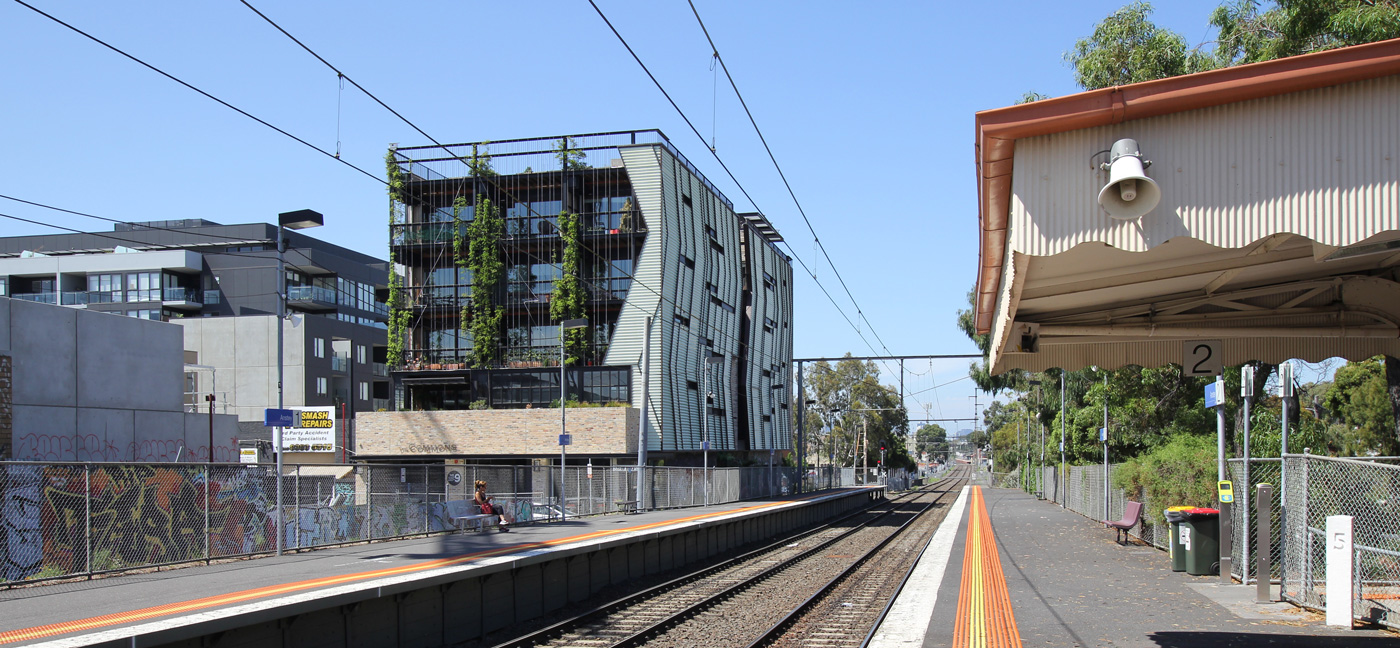The term 'housing affordability crisis' is increasingly used in Australia suggesting there are no affordable houses available. Houses are certainly more expensive but are also much larger, whilst accommodating fewer occupants and spread over a much larger urban footprint. Buying a small house on the fringe was an option for many first home buyers in the past, but is no longer acceptable to most young people gripped by infrastructure FoMO (fear of missing out).
Housing prices in Australia grew at an annual rate of around 3% from 1950 to 1990. This increased to 6% in the period between 1990 to 2015. The ratio of median house price to household income was around two from 1950 to 1985 but increased to around four between 1985 to 2015. These statistics are often used to support the 'affordable housing crisis' however there are many complex factors contributing to this. Within the same timeframe the average house size has steadily increased from 100sqm to 243sqm while the average occupants per household has decreased from 3.5 to 2.61.
In recent years priorities have also changed amongst young people and standards of living have increased significantly. The 'smashed avocado' syndrome is not altogether un-true. Many young people are choosing to spend their money on lifestyle rather than property paying a higher proportion of their income to rent in established inner city locations rather than purchasing. Previous generations entered the market in small houses on the fringe, gradually working their way up to living in larger houses in inner city locations over a period of time.
The 'housing affordability crisis' has partly resulted from increasing standards of living rather than unpredictable spikes in property prices. It is somewhat unrealistic to expect a large supply of affordable housing in premium inner city locations. It is equally unrealistic to expect the average house to maintain a level of affordability when its size has increased 2.2sqm per year for the past 65 years.
Housing priced at the lower end of the market is typically located on the outer suburban fringe, much further from the city than in previous years. Affordable house and land packages on the fringe are still accessible to many, the problem is most people don't want to live in these areas. Urban sprawl is one of Australia's most significant economic, social and environmental challenges. Our state and federal governments have been reluctant to fully commit to addressing urban sprawl over a long period of time. Fringe suburbs have poor access to established social, recreation, education, employment, transport infrastructure and require significant commuting times for those who choose to live in them. Outer suburb residents suffer from fringe infrastructure FoMO.
The other option for first home buyers is smaller developer generated inner city apartments which are often typically low in quality. Older residents have worked for years to afford to live in established inner city suburbs. They are increasingly alarmed by the emergence of low quality apartment complexes adversely impacting on their neighbourhoods, to satisfy the younger generations locational preference. Local community backlash to low quality apartment outcomes is a significant negative force in achieving higher inner city densities.
Most government agencies working in the affordable housing space generate extensive investigations establishing price caps for one and two bedroom apartments. These are typically achieved by maximising plot ratios, minimising apartment sizes and reducing developer profit margins which all inevitably impact on the quality of outcomes. This results in a product not dis-similar to that commonly found in the market at a marginal cost saving and doesn't often produce innovative outcomes.
These are a few of the complex forces influencing housing affordability in Australia. Housing generated over a long period of time however has not adapted to these forces and our changing needs. Flexibility of use within houses is gaining traction, accommodating shared use by multiple family generations or non-family occupants. Home owners increasingly want flexibility to expand and contract zones in their house for work at home, semi-independent teenagers, young adults, elderly parents or to rent to others at certain times in their life cycle. Local councils have also relaxed the requirements for 'granny flats' (ancillary dwellings) in recent years. These are important fine grain responses to our changing needs signalling a change in thinking.
The importance of design efficiency is also not fully acknowledged. A well designed small house can be more usable than a much larger house which is poorly designed. If you consider this notion in relation to the entire housing stock in Australia one could easily imagine a small lift in the design efficiency of the mass housing we are typically generating would have a significant impact on housing affordability by reducing the areas we need to construct.
Examining the procurement of apartment projects is important in achieving successful outcomes. Conventional procurement structures are limited by commercial market forces which restrict outcomes that can be achieved. The Commons development by Breathe Architecture in Brunswick, Melbourne was conceived on the notion that the market is not achieving good outcomes but while apartments generated in conventional ways are selling, there is no incentive to lift the standard. Purchasers as future residents were heavily involved in the decision making process. An 'ethical procurement structure' was developed to achieve a sustainable and affordable outcome. Located next to a train station the development provides no parking or air conditioning, simple finishes with no ceilings, a communal laundry and a dedicated shared car, all of which provided significant cost savings. The procurement structure named Nightingale is being replicated to generate other successful outcomes in Melbourne.
The City of Fremantle is currently establishing a scheme using the Baugruppen housing model which originated in Europe and has been used extensively throughout Berlin. The term translates as 'building groups'. Future residents co-operatively design the complex based on communal values and are free to explore non-standard housing typologies which developer led projects requiring marketing wouldn't consider. This procurement model typically generates unique outcomes and a strong sense of community at significantly lower costs by eliminating developer profits as well as marketing costs. Resident led and funded development is an alternative to the conventional developer led, investor financed model and has delivered many high quality, sustainable as well as affordable outcomes in Europe.
These are the types of innovative initiatives that require further exploration and development which may hold the key to addressing the issue of housing affordability in Australia. They require and inherently possess a change in thinking. We cannot continue to generate larger, spatially inefficient houses accommodating increasingly fewer inhabitants and also expect them to be affordable. Simply reducing the size of houses is also not an adequate solution in itself. Young people and retirees for that matter, are increasingly open to living in smaller inner city dwellings near established infrastructure. As such we need to generate high quality, spatially efficient and flexible dwellings to accommodate them which also contribute to, rather than adversely impact on our established inner city communities.
January 2017
1. Statistics sourced from the Australian Bureau of Statistics www.abs.gov.au
Image - The Commons in Brunswick, Melbourne by Breathe Architecture






